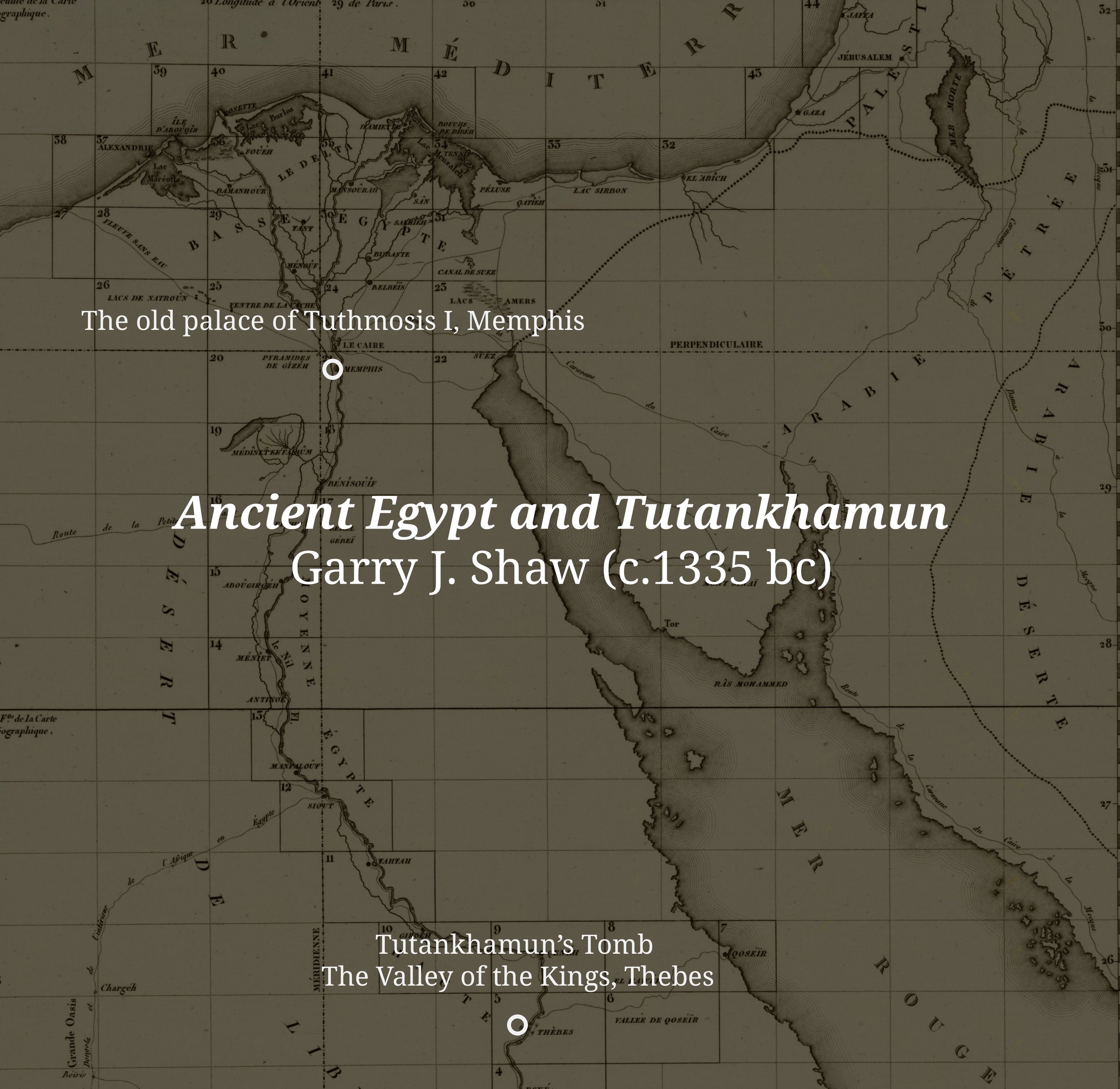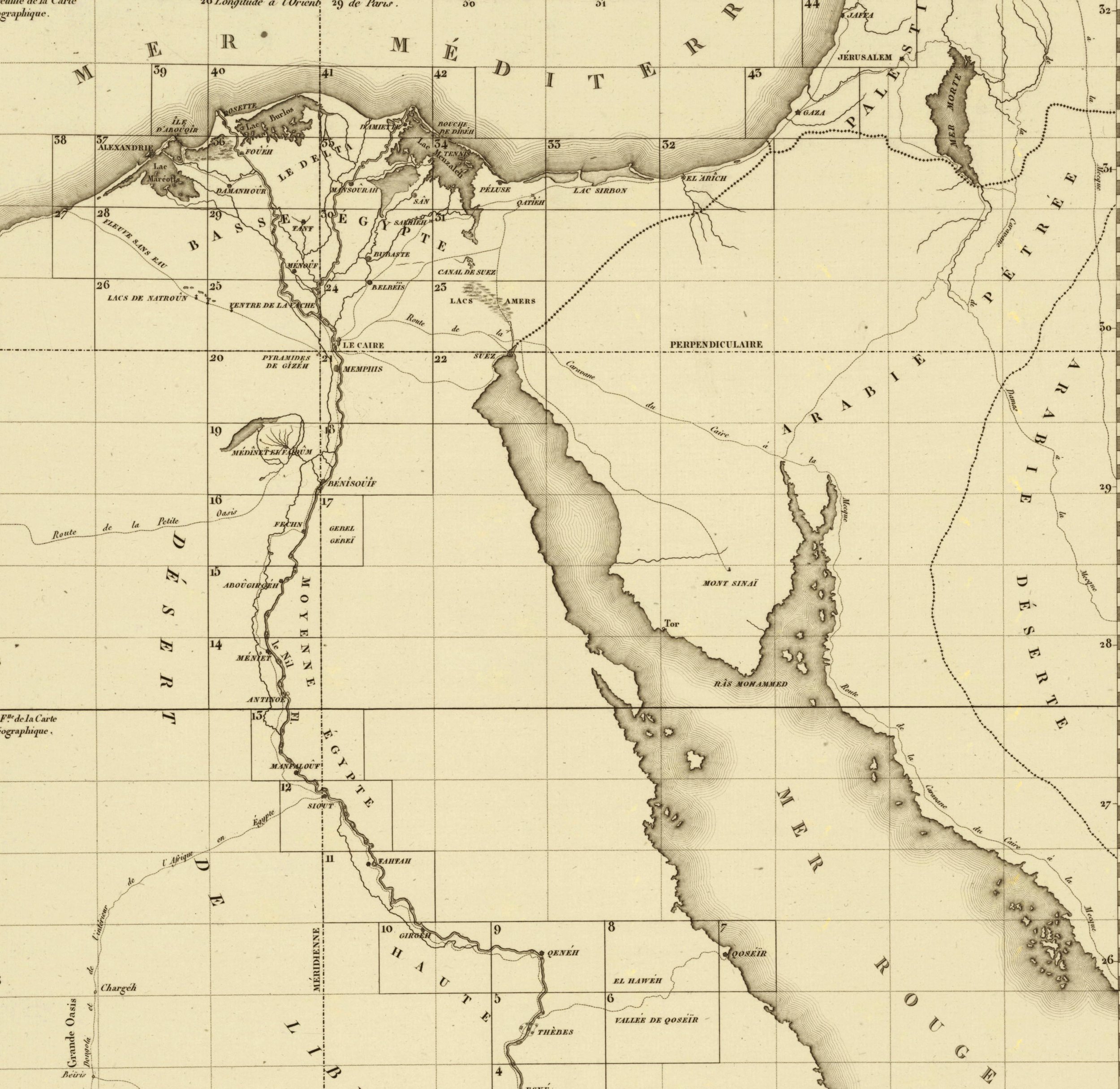Ancient Egypt and Tutankhamun: Garry J. Shaw (c.1335 bc)
Garry J. Shaw. Author of Egyptian Mythology: A Traveller’s Guide
Tutankhamun. That one name is enough to conjure up enticing images of Ancient Egypt: dashing chariots, mighty temples, skiffs sailing on the Nile and, most of all, Tutankhamun’s own transfixing Golden Mask.
But who really was this figure who has come to represent so much?
In this episode we are joined by the Egyptologist Garry J. Shaw who takes us back to the age of Tutankhamun to find out.
*** [About our format] ***
In around the year 1343 BC an eight or nine year-old boy became the king of Egypt. His name was Tutankhamun and today we know him better than, perhaps, any other individual from the ancient Egyptian world.
We know about Tutankhamun because of the astonishing discovery of his beautifully preserved tomb almost a century ago in 1922. The artefacts that were recovered from that site provided archaeologists with tantalising glimpses of a lost world. It suggested a place of gold and Gods, temples and ceremonies.
The Mask of Tutankhamun; c. 1327 BC; gold, glass and semi-precious stones; height: 54 cm ; Egyptian Museum (Cairo). Wiki Commons.
Today’s guest Garry J. Shaw amplifies our understanding of this ancient society. Our perspective today, he explains, is somewhat skewed. Because temples and tombs have survived when towns and cities have not, the impression that we have is that Ancient Egypt was a civilization obsessed with death. While there was certainly a great deal of importance placed on the supernatural, there was much more to their lives than this.
Shaw’s destination is the mid second-millennium BC. This was a vibrant time, when Egyptian society was at the peak of its powers. Great temples were being built in places like Luxor on the banks of the River Nile. The king was growing rich with tributes that arrived from across the Levant.
This was the age that Tutankhamun lived in, a period known to Egyptologists as ‘the New Kingdom.’ Enough is known about this period to reconstruct a fascinating biography of the young king.
Shaw explains how he ascended to the throne when he was just a boy of eight or nine. The situation he faced was complex. His father, Akhenaten, had been a disruptive figure. He had introduced a series of religious reforms and it fell to the son to undo these. In around the year 1343 BC there is evidence of Tutankhamun in the royal city of Memphis, working to bring Egypt back toward tradition.
As well as details from Tutankhamun’s life like this, historians have sought to uncover the manner of his death. Over the years various interpretations have held sway. Was he smashed over the head? Might he have been fatally injured in a chariot accident? Or was Tutankhamun victim to something far more prosaic like a bout of malaria?
One alluring detail relates to Tutankhamun’s legs. Recent forensic analysis has suggested that he had a club foot and that one of his legs may have been broken shortly before he died. What this signifies is uncertain, but it seems likely that Tutankhamun made use of a kind of walking stick, similar to the ones that were recovered from his tomb.
As Violet Moller reflects towards the end of this episode, we are accustomed to think of Ancient Egypt as a static society. But in reality for 3,000 years it was a place of constant change with many distinct rulers and fashions before it was eventually replaced by the Greco Roman world. Tutankhamun’s Egypt is a wonderful illustration of this point.
***
Garry J Shaw’s sumptuous new book, Egyptian Mythology: A Traveller’s Guide has recently been published by Thames & Hudson.
*** Listen to the podcast ***
Show notes
Scene One: c. 1343 BC. Tutankhamun (aged about nine) in Memphis, in the old palace of Tuthmosis I.
Scene Two: c. 1333 BC. Tutankhamun dies and is buried in the Valley of the Kings on the west bank of the Nile at Thebes.
Scene Three: c. 1328 BC. The coronation of Horemheb in Thebes.
(Disclaimer: With events so distant, absolute precision regarding dates is very, very difficult)
Memento: Tutankhamun’s walking stick
People/Social
Presenter: Violet Moller
Guest: Garry J Shaw
Production: Maria Nolan
Podcast partner: Unseen Histories
Follow us on Twitter: @tttpodcast_
Or on Facebook
See where 1335 BC fits on our Timeline
About Garry J Shaw
Garry J. Shaw is an Egyptologist and travel writer who regularly writes for the Art Newspaper and has contributed to Apollo Magazine, History Today, Current World Archaeology and Timeless Travels. He is the author of The Egyptian Myths: A Guide to the Ancient Gods and Legends, also published by Thames & Hudson.
Map of the Scenes
Background Image: Library of Congress
The Pharaoh Tutankhamun destroying his enemies (Wiki Commons)
A relief of a royal couple in the Amarna style; figures have variously been attributed as Akhenaten and Nefertiti, Smenkhkare and Meritaten, or Tutankhamen and Ankhesenamun; relief dates to after the former king's death. (Wiki Commons)
Listen on YouTube
Complementary episodes
Skara Brae: Neil Oliver (2,500 bc)
Beside the ocean, on the wind scoured coast of the Orkney Islands off the northern coast of Scotland, lies the remains of Skara Brae. This is the best-preserved Neolithic settlement in all of Western Europe and, for today’s guest Neil Oliver, it is a place that continues to enchant him.
The Neanderthals and their Wild Woodland World: Dr Rebecca Wragg Sykes (the Eemian)
In this fascinating and unusual episode of Travels Through Time the archaeologist and writer Dr Rebecca Wragg Sykes takes us back further than we’ve ever been before to meet our extinct kindred: the Neanderthals.












